Margaret Byrd’s Ephemeral Eco-Art Installations
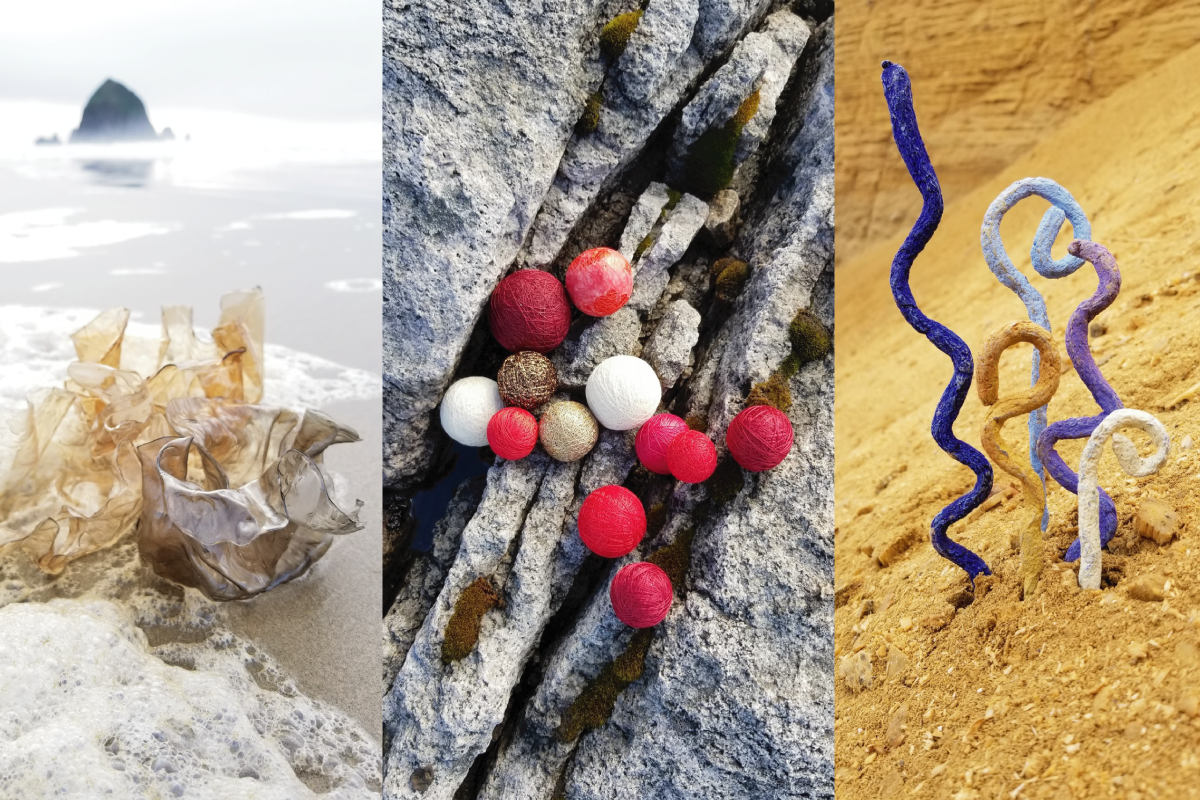
Margaret Byrd
Installation Artist
Interview by Hailey Hirst
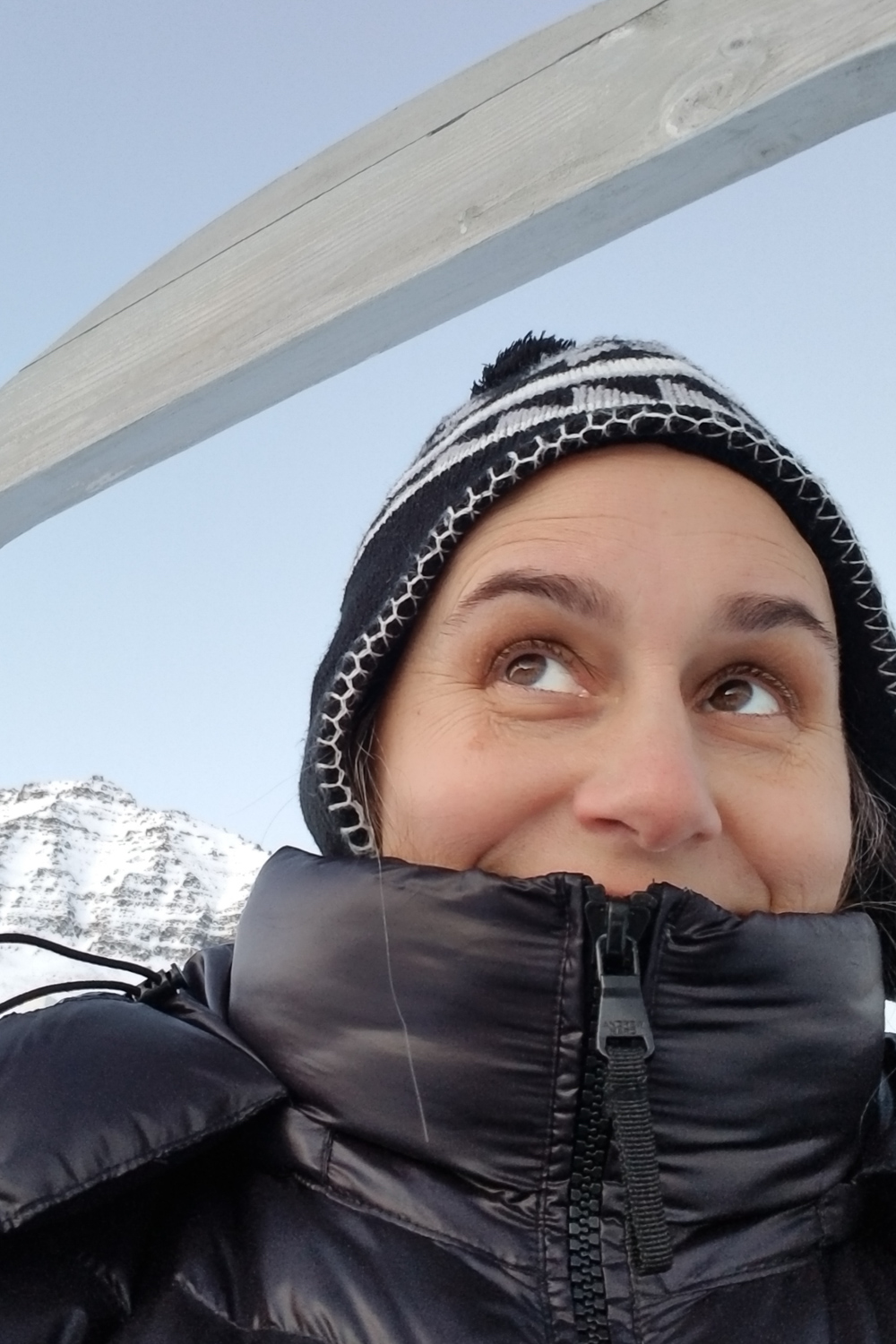
Margaret Byrd is a mixed media installation artist who creates small scale, ephemeral sculptures and places them in various landscapes around the world. Her pieces are built to interact with, and yet also contrast against, the environments they lie within—creating a moment of wonder for whoever may stumble upon them, for however long the pieces last.
In a cyclical nature, many of Margaret’s installations are made intentionally to break down and disappear back into the Earth. Ice plays a major role in her installations, but she’s recently taken to experimenting with other eco-friendly biodegradable materials. She emphasizes that she is very respectful of the environment no matter where she chooses to place sculpture and takes significant precautions not to cause an impact.
As an avid traveler, she’s placed her work in a wide variety of landscapes, and plans to continue to do so as she devotes more attention to her artistic practice and growth.
I caught up with Margaret on Skype to learn more about her work. We talked about her artistic choices, the cyclical nature of her creative practice, experimentation, and also touched on her recent mid-life pivot. She was a joy to speak with, and I hope you enjoy meeting her as much as I did.
Find out more, in Margaret’s own words:
Meet Margaret Byrd
Editor’s note: This conversation is the condensation of a Skype conversation and has been edited for length and clarity.
How do you choose each landscape that you work in, and what draws you to those places in particular?
Over the course of two years, I’ve placed art installations in fairly diverse areas, but what I’m discovering is that I’m probably meant to work in more remote, subdued landscapes.
I’m trying to create a visual difference, so if I’m placing something within a colorful environment, like the tropics of Hawaii or Mexico, I struggle to compete with the natural landscape. So what I’ve discovered is that even though those settings are inspirational to me, I find the more simple the environment, the better the interplay with my work.
For instance, I’ve become passionate about working in the polar regions. I’ve got Greenland, Svalbard, and Antarctica on my list of places that I believe my work is going to be the most impactful, and most inspiring for myself.
At the other extreme, I’d like to explore the desert, because I think there are a lot of similar characteristics in such desolate landscapes.
I’ve noticed that you choose places that have an element of water, or places that have very rich texture elements, if not color.
I think texture is a really good example. I am very much attracted to stone in all its variations, from sand to large boulders, and the different textures they hold. I’ve also recently discovered the beautiful world of earth pigments—so that ties in with my love of rocks and provides a way to experiment with color from nature.
I just placed an installation on the beach near San Diego where I found beautiful ochre deposits in sandstone and was able to create a visual tension between the blue color of the pieces I was placing with the starkness of black sand, white stone and a bright red line of iron oxide.
- Paper pulp and a natural ochre stripe in San Diego, California.
- Red thread balls on granite.
Let’s talk about the cyclical component of your creative practice. Can you explain what that means to you?
I didn’t start off thinking about the cyclical piece of my process; I discovered it slowly, and now it’s driving my steps forward in terms of what I’m looking for.
I went on a really amazing foraging trip a couple months ago with Heidi Gustafson. She spoke about the spiritual nature of the Earth providing for us, and in turn, how we should take steps to thank the Earth back. I started realizing that in my work, I’m given an opportunity to take from the Earth, while also leaving these little sculptural homages as a thank you that can trickle back from where it came.
Now I’m on this pursuit to extract color from organic matter, and focusing on how I can create materials that come from the Earth and dissolve back into the Earth. So that’s the cyclical side—this give and take, playing with building up and breaking down.
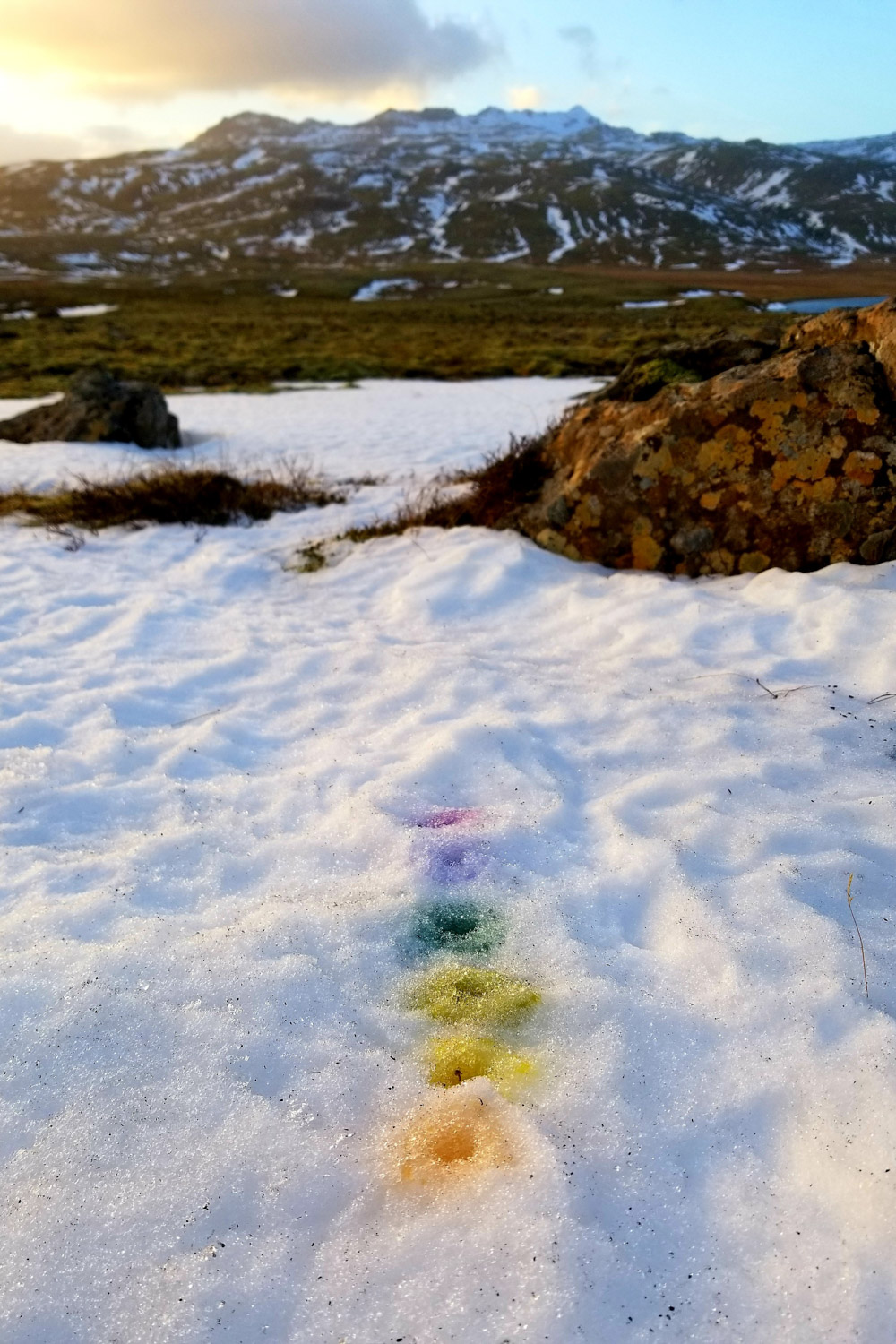
Remnants: dyed snow in Iceland.
What mediums have you been working with lately that you’re excited about?
When I started, my first installations were ice. Ice is still very much a part of my practice, and I will continue to work with it, but there’s a challenge to something that is so temporary, particularly in warm areas. I love the interplay between hot and cold and have embraced the challenge of placing installations in a short amount of time. But, I’m also looking for other materials that have longevity, as well as a longer lifespan to sustain installation indoors.
This has led me to experiment with a lot of different materials. At first, I tried various types of glue and resins—which are fun to play with, but they don’t work for me to leave behind.
I started experimenting with mung bean, and that was beautiful. I placed some pieces in Hawaii and Peru, all hand-dyed with botanical colors that I brewed. But traveling with that material, it just disintegrated. I also placed an installation near water, and as soon as it got wet, it melted.
- Mung bean globes on a sand beach.
- Placing swirls in the volcanic landscape of Haleakala, Hawaii.

Bioplastics at Cannon Beach, Oregon
I’ve most recently discovered bioplastics. I’m testing out 4 or 5 different recipes to see what might work, and I’m pretty excited about one of them. It appears it will be this beautiful translucent material that holds a form and doesn’t melt as easily as what I’ve tried before.
For color, I’ve become obsessed with finding ways to pull it from natural sources. My last residency was about extracting color from seaweed, and I’m off to Mexico this month to learn more about botanical dyeing. I’ll work alongside a dye master brewing color from botanicals in the Mexican mountains, so I’m excited to see what secrets I’ll learn.
How do you handle the breakdown of materials and the ephemeral nature?
A lot of people ask me how I can do something that dissolves so quickly. Like, why would I put all this time and effort into building something that disappears? But I believe there is beauty in building just for building’s sake, and being 100% present in creating something with no attachment to it.
I believe there’s a beautiful interplay with the fact that what I make is going to disappear.
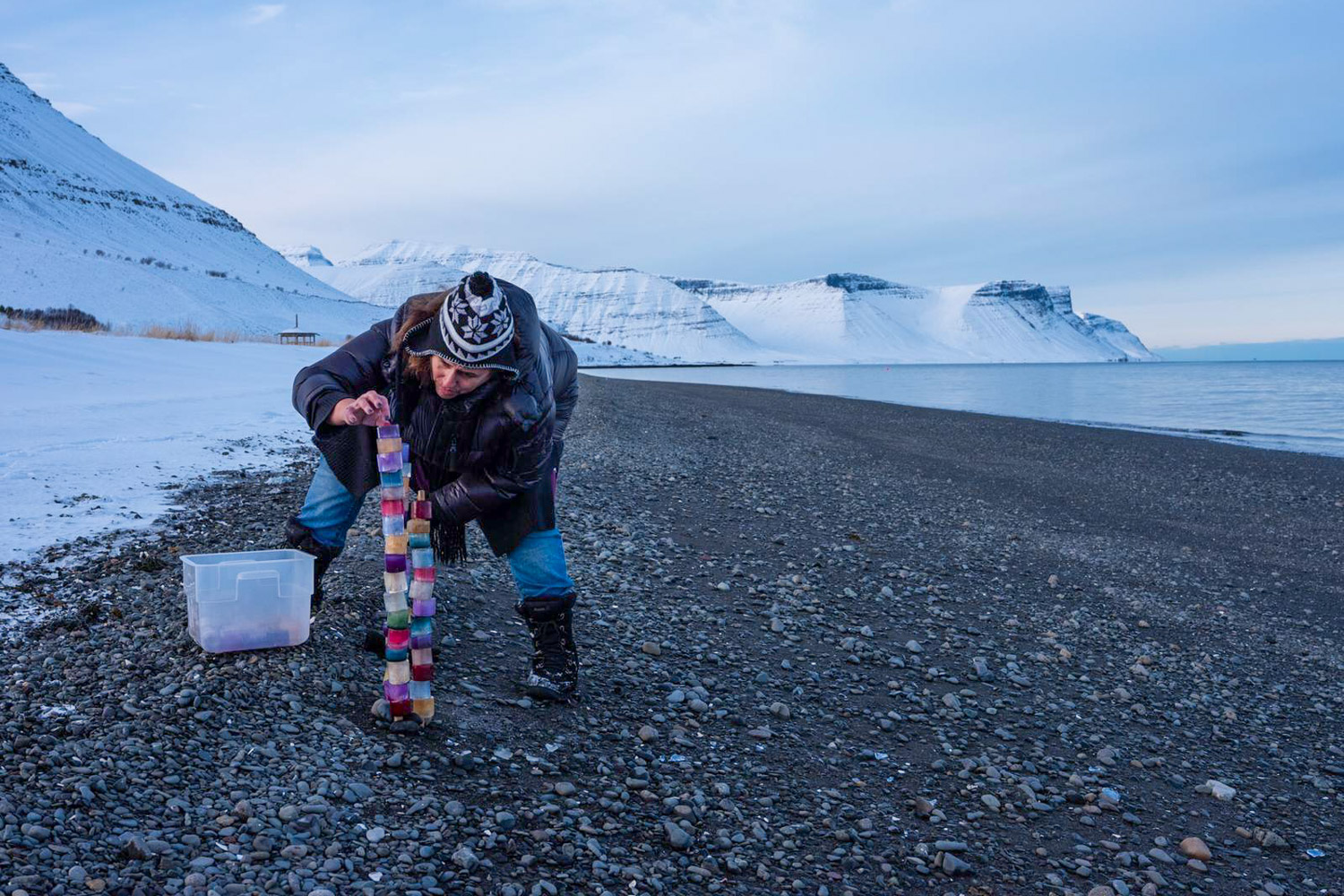
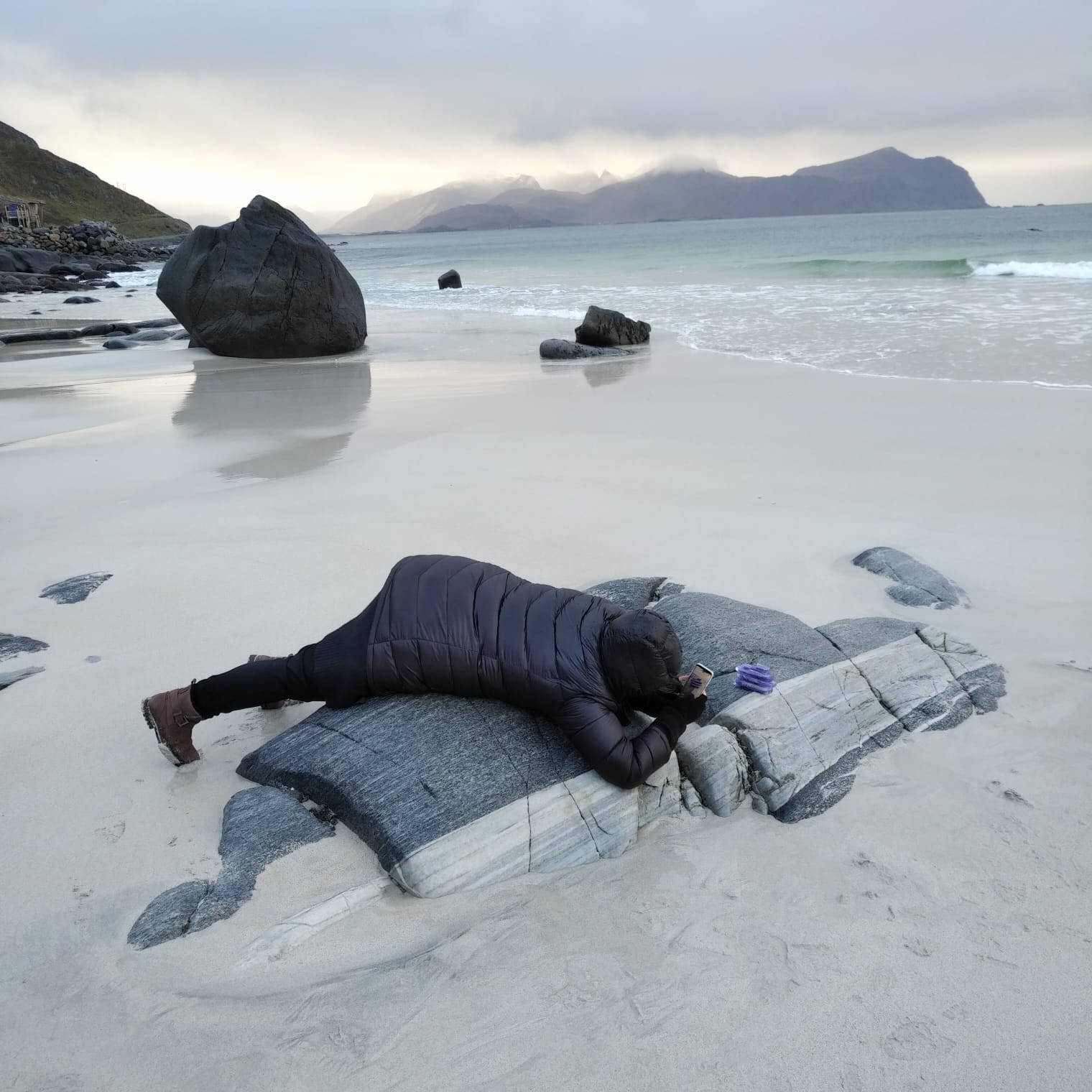
Artists often get stuck because they become too attached or afraid to put marks down because somehow they think they are permanent. I believe there’s a beautiful interplay with the fact that what I make is going to disappear. That’s the fun of it. Plus, I have to say I’m cheating a bit because I photograph everything. So I am keeping it, just in a different way.
Let’s talk about your mid-life pivot. How did you shift into this recent focus on your artwork?
I went to art school years and years ago, and I’ve always wanted to be a working artist, but my life went a different way. I had kids, I had to raise them, I had to work, and so forth. I’m grateful for my work because the experience I’ve had there has helped me enormously in this shift, and I have a lot of business acumen because of it.
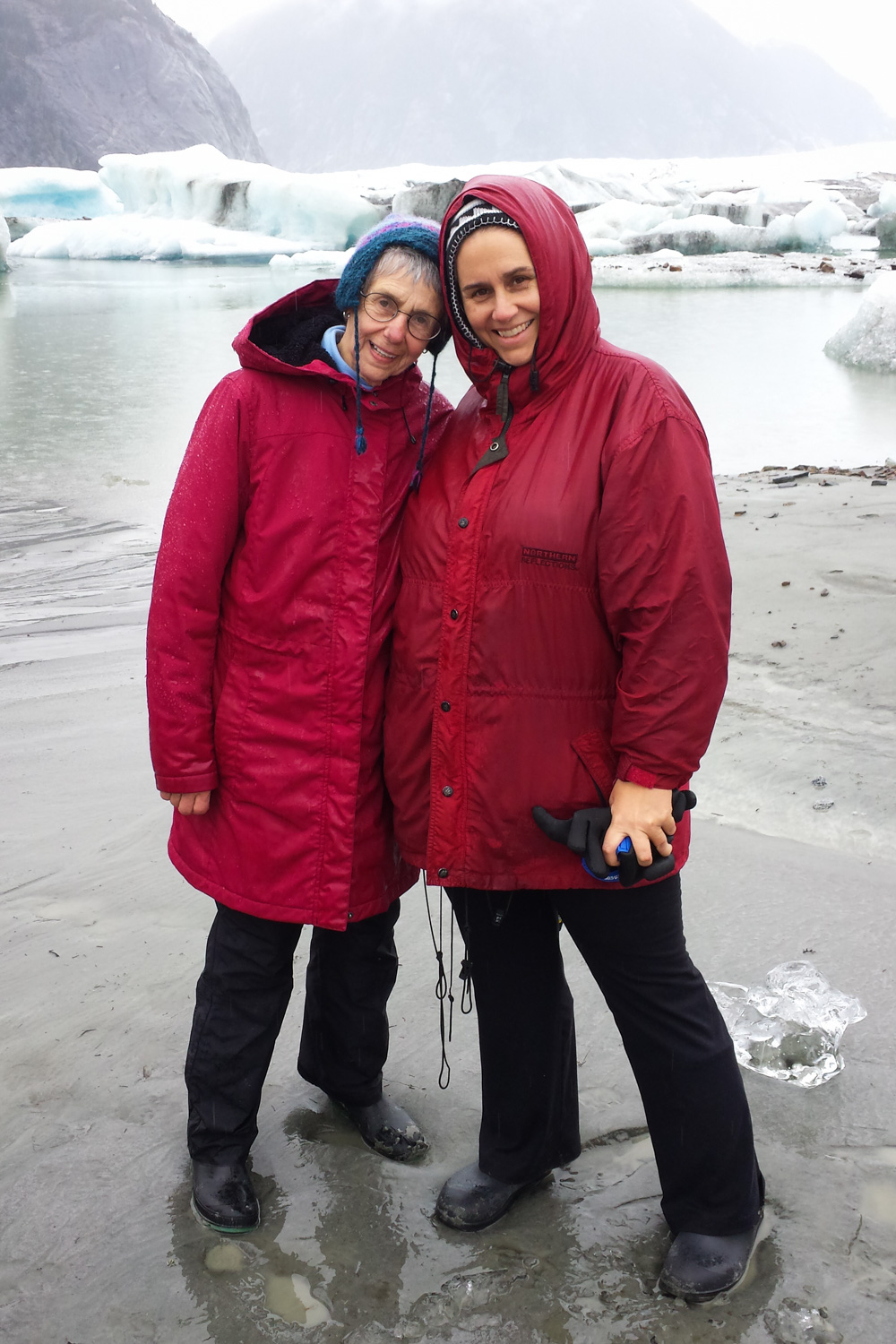
Margaret and her mom in Alaska. “She was an explorer too!”
But the shift came about because of my mom, actually. She was diagnosed with Alzheimer’s about four years ago. She’s recently passed, but I cared for her for most of that time after her diagnosis.
Art was a way I could cope with what was happening. And secondly, when you witness the decline of an individual who had been so dynamic—my mom was an incredible person in her career and work to empower women— you see that and go, “Holy crap! I need to stop this other stuff and focus on what’s important and what I really want to do.”
So the midlife pivot, which I think this is pretty common, has been a real understanding that I have X amount of time left, and if there’s something I’ve always wanted to do that I still have the capacity for, I just need to do it. I feel like I want to yell this from the mountain tops and cheerlead for others to take those same steps in their lives.
Can I ask what kind of work you did prior to this focus on art?
I still have my job, actually, and this is what has taken me all over the world. I’m a salesperson within the technical field. It’s afforded me a lot of freedom, both financially and in the ability to care for my family.
Now I’ve carved out a sweet spot for myself where I can work from home and also create my artwork. I have the benefit of travel and a lot of free plane tickets, which is not to be taken lightly. In this job and previous ones, I’m pushing 70 countries that I’ve visited. A lot of that was funded because I had a job that took me to those places.
That’s wonderful to know. I think people sometimes get the impression you have to do one or the other, so that’s a good reminder that a day job doesn’t mean you can’t also live the life of an artist.
There are a lot of artists who are ashamed they have to work, or that they have a job other than ‘full-time artist’, so I’m also trying to stand up and cheerlead those people who are doing both—because quite frankly, a lot of people are. My hope is that within five years I will be able to quit my job and go crazy on both art and travel.
We look forward to seeing how Margaret’s work continues to evolve, what developments she makes in plant-based dyes and new materials, and what different landscapes she plays in next!
Learn more about Margaret Byrd on her website, margaretbyrd.com, and see more of her work and travel on Instagram @moonbyrdie.







Be the first to comment